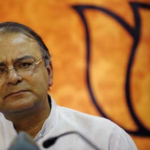TOPIC:
urbanization, their problems and their remedies.
Contents
Objective:
- In 2008, 34 crore people lived in urban areas and 60 percent of the Gross Domestic Product (GDP) came from urban areas only.
- It is expected that by 2030, 59 crore people will be living in urban areas and 75 percent of the GDP will be coming from urban areas only.
- Cities will become engines of economic growth.
- The demand for every civic amenity will increase by 5-7 times with the increase in per capita income.
- For this, infrastructure of existing cities will have to be improved.
- There is a need to upgrade mid-sized cities surrounding the bigger cities and make new satellite towns.
- Only then the increase in migration will be accommodated.
Urbanization related issues:
- Migrant inflow: This leads to informal employment and exploitation of laborers.
- Under employment: This leads to crime, drug abuse and alcoholism.
- Black Money generation: As land is less and the population increases due to in-migration, land prices will increase. But builder will not show it in order to evade stamp duty.
- Lack of funds: Municipalities do not have enough funds, so the quality of civic amenities will be poor.
- Environmental issues:
- Due to shortage of land in urban areas, migrants will be forced to live in outskirts. Absence of any public transport system will make them use their own vehicles. So pollution will increase.
- The consumption of electricity, diesel and petrol , diesel generators in malls will increase thereby contributing to pollution.
- Shortage of land will lead to development of slums. Due to poor standards of living, diseases will become rampant. As a result, people will not be able to work and will come under poverty.
- Sparrow population will decrease because of urbanization. This is because skyscrapers use glass panels. Sparrows confuse them with sky and collide with the glass panels. They have no place to make nest.
What is a SMART city?
- A SMART city has smart physical, social/civic and economic infrastructure.
- It is equipped with smart mobility, smart utility and smart technology.
- There are 0 percent bureaucratic hassles and everything is done through 100 percent Information & Communication Technology (ICT).
- But these are only the means to an end.
- The end goal is to improve quality of life, to provide employment opportunities and to augment investment opportunities for companies.
- But all this will be done while protecting environment and social sustainability.
Benchmark & Pillars:
Electricity infrastructure:
- There will be smart grids
- Self- healing against power outages.
- Resilient against cyber attacks.
- Digitally managed street lights. (automatic).
- 10 percent of the electricity required should come from renewable energy resources like rooftop solar power plants. But they cannot work 24X7. So their energy should be stored in a battery and connected to a grid so that it can be made to reach houses.
- Will generate energy from municipal waste.
Water, Sanitation:
- Smart meters.
- There will be mandatory Rain Water Harvesting to recharge aquifers, proper storm water drainage mechanism.
- Quality measurement system will be there to check the purity of water.
- There will be segregation of municipal waste into recyclable and non-recyclable wastes. Its smart transport via the optimal route( found using ICT) so that minimum diesel is used. Its smart treatment and smart disposal.
- Penalty for civic indiscipline like slum encroachment, littering, misuse of water, electricity etc. Citizens can complain using apps and social media.
Transport:
- Smart parking.
- Intelligent traffic management.
- Multi modal transport with smart cards.
- Major focus will be on improving the public transport system.
- Ring roads, bypasses, underpasses and elevated roads will be constructed to avoid congestion.
- Different lanes for waterways, walking and cycling will be made.
- End Result: Provision of public transport system within walking distance. Private transport will decrease, so there will be less emission of Green House Gases(GHGs), traffic jams will reduce. As a result, men and material could be transported easily so it will lead to GDP growth.
Housing:
- Housing for all including the Economically weaker Sections (EWS) and the Low Income Groups (LIG).
- 95 percent of the houses will have schools, shopping complexes & parks within 400m all integrated with ICT.
- Upgrade the existing slums.
- Green and disaster proof housing.
- Modular houses.
Education:
- Nurseries, schools, colleges, golf course, swimming pools and sports complex will be there.
- Tele education, E-learning
- Population Based Benchmarks- Primary schools, Senior Secondary Schools, Higher Secondary Schools, colleges and universities will be there.
Healthcare:
- 100 percent telemedicine facility for all.
- 30 minutes emergency response time.
- One dispensary for every 15,000 residents.
- Population Based Benchmaks: Intermediate hospitals, Multi-specialty hospitals, Family Welfare centres and Veterinary hospitals will be there.
ICT:
- There will be 24X7 availability of water, electricity, emergency medical service and fire services.
- Telephone and Wi-Fi to all at 100 mbps for every household.
Economic:
- Kiosk banking, mobile banking app, Rupay card etc.
- Skill development centres will be made for the youth.
- Incubation centres will be established to help start-ups.
- Financial centres like GIFT city.
- Export parks for IT and manufacturing.
- Connectivity with ports.
Read more: SMART CITY MISSION (Part-2)










